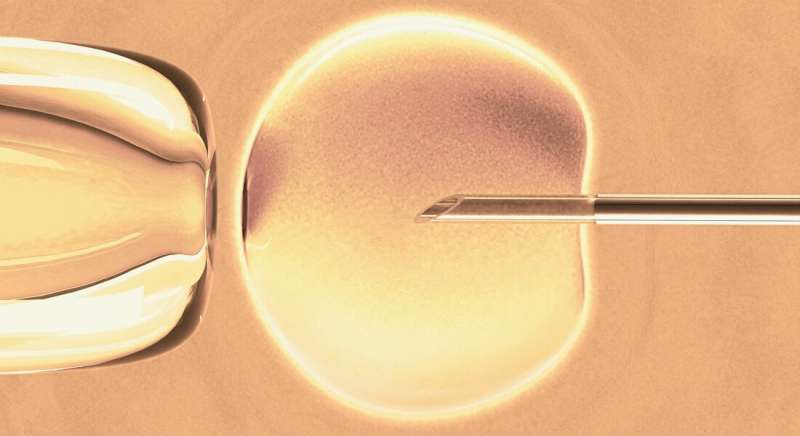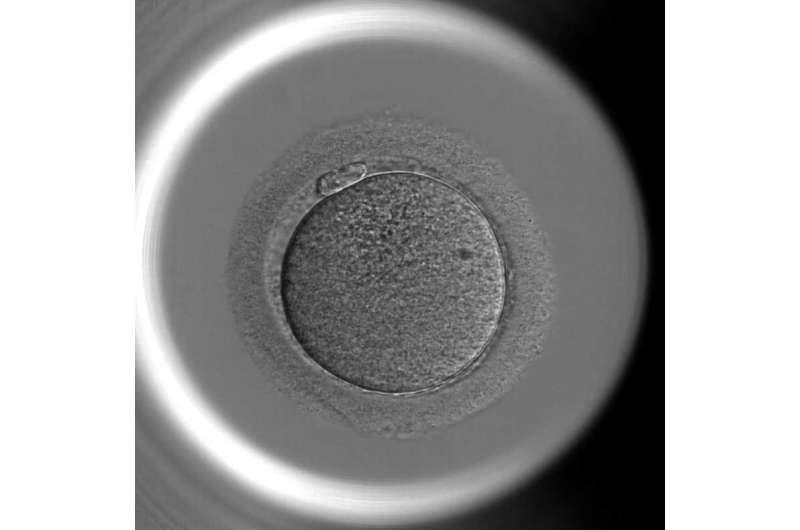Researchers find molecular mechanisms behind women's biological clock

Researchers have mapped out some of the mechanisms that may affect women's fertility from the teenage years to menopause. These mechanisms largely depend on naturally occurring chromosome errors—errors that vary depending on age group.
This is the conclusion by an international research group in a new study, led by researchers from the University of Copenhagen. The scientists, who come from a number of European universities, have reached their conclusion after examining 3000 egg cells from girls and women between the ages of nine and 43.
"We have known for a long time that we humans have a unique fertility curve compared to many other species. The curve starts out very poorly in the teenage years and starts to go downhill again when women reach their 30s. But until now, we have not known what is actually causing these changes," says Head of Research and Professor Eva Hoffmann from the Department of Cellular and Molecular Medicine at the University of Copenhagen.
Molecular Glue
Unlike men who do not form sperm until they reach puberty, women are born with all the egg cells they will have available throughout life. However, the eggs are immature and do not fully develop until the menstrual cycle begins.
"While the eggs lie dormant, a kind of molecular glue will make the chromosomes stick together. Later, when the eggs are maturing, the chromosomes divide. But the older the women become, the greater the risk that the glue will break down prematurely," says Eva Hoffmann.
The hereditary material thus falls apart, resulting in chromosome errors which may, for example, lead to syndromes such as Down, Turner or Kleinfelter. Or which may make the eggs infertile.
Also in teenage girls, the researchers found a greater incidence of chromosome errors during the maturing of the eggs. In this case mostly due to the eggs not reaching a sufficient level of maturity.

This meant that in adolescence, especially the larger chromosomes in the hereditary material developed defects—and thus increased the likelihood that the eggs would be expelled by the body without being fertilized.
As the teens turned into young women, the researchers observed how the eggs became healthier, while the chromosome errors gradually disappeared. A trend that continued until the women were in their late 20s, after which other types of chromosome errors started to set in.
Wider Hips and Grandmothers
Scientists do not yet know for sure exactly why human fertility rises, peaks and falls within a defined age range. By comparison, our close fellow species, the chimpanzees, do not in the same way experience menopause, but are rather consistently fertile throughout their adult life.
According to Eva Hoffmann, it may be a matter of two evolutionarily developed mechanisms in humans. First, a mechanism that protects very young women from becoming pregnant until their bodies are fully developed—and thus better able to bear children due to, for example, wider hips that reduce the risks associated with giving birth.
Second, a mechanism that potentially makes older women take on a new, supportive role as grandmothers when their own children become able to produce offspring—a theory which within a number of research fields has become known as the 'grandmother hypothesis.'
Eva Hoffmann points out that the new results may be used to improve the dissemination of information about child-bearing and pregnancy loss. Just as the increased knowledge may be able to improve the treatment of infertility in the long term.
"Pregnancy loss is still a taboo, but with knowledge like this, we are able to better understand and demonstrate that it is a natural thing. At the same time, a greater understanding of the mechanisms behind our biological clock may enable us to better control the breakdown of the eggs. Either in the eggs themselves or in the maturation process in the fertility clinic," says Eva Hoffmann.
More information: Jennifer R. Gruhn et al, Chromosome errors in human eggs shape natural fertility over reproductive life span, Science (2019). DOI: 10.1126/science.aav7321




















